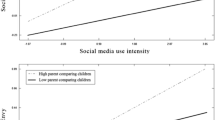Abstract
Kindergarten children were videotaped playing with female- and male-traditional toys as well as nonsex-typed toys. Coders calculated time spent by each child in behavioral categories (positive and negative comments, aggression, nurturance, movement, noise, and gadgetry) and rated children on scales (talkativeness, activity, familiarity, enjoyment, proximity, appropriateness, and gentleness). Sex differences were revealed on most dimensions. Boys were rated as familiar with, enjoying, and playing appropriately with two toys (male-traditional and nonsex-typed) and girls on the female-traditional toy. Girls paid more attention to details of the toys, while there were few differences on aggression and movement. Data suggest that children develop varying patterns of play with the same toy—based on their earlier experiences with play materials. Agents promoting these differences (parents, teachers, and peers) are discussed, as are implications of the findings for children's development of skills and cognitive abilities.
Similar content being viewed by others
References
Clark, A. H., Wyon, S. M., & Richards, M. P. M. Free play in nursery school children. Journal of Child Psychology and Psychiatry, 1969, 10, 205–216.
Connor, J. M., & Serbin, L. A. Behaviorally based masculine and feminine activity-reference scales for preschoolers: Correlates with other classroom behaviors and cognitive tests. Child Development, 1977, 48, 1411–1416.
Fagot, B. I. Influence of teacher behavior in the preschool. Developmental Psychology, 1973, 9, 198–206.
Fagot, B. I. The influence of sex of child on parental reactions to toddler behavior. Child Development, 1978, 49, 459–465.
Fagot, B. I. Sex determined consequences of different play styles in early childhood. Paper presented at the meeting of the American Psychological Association, Toronto, August 1978.
Fagot, B. I. & Littman, I. Relation of preschool sex-typing to intellectual performance in elementary school. Psychological Reports, 1976, 39, 699–704.
Fagot, B. I., & Patterson, G. R. An in vivo analysis of reinforcing contingencies for sex role behaviors in the preschool child. Developmental Psychology, 1969, 1, 563–568.
Garrett, V. C., Cherry, F., Kahn, L., & Diepold, J. H., Jr. The effects of age, sex, and adult presence on preschool children's sex-typed toy play behavior. Paper presented at the meeting of the American Psychological Association, San Francisco, August 1977.
Hartley, R. E., & Hardesty, F. P. Children's perceptions of sex roles in childhood. Journal of Genetic Psychology, 1964, 105, 43–51.
Liss, M. B. Variables influencing modeling and sex-typed play. Psychological Reports, 1979, 44, 1107–1115.
Maccoby, E. E., & Jacklin, C. N. The psychology of sex differences. Stanford: Stanford University Press, 1974.
Pedersen, F. A., & Bell, R. Q. Sex differences in preschool children without histories of complications of pregnancy and delivery. Developmental Psychology, 1970, 3, 10–15.
Rheingold, H. L., & Cook, K. V. The content of boys' and girls' rooms as an index of parents' behaviors. Child Development, 1975, 46, 459–463.
Ross, D. M., & Ross, S. A. Resistance by preschool boys to sex-inappropriate behavior. Journal of Educational Psychology, 1972, 63, 342–346.
Serbin, L. A., O'Leary, K. D., Kent, R. N. & Tonick, I. J. A comparison of teacher response to the pre-academic and problem behavior of boys and girls. Child Development, 1973, 44, 796–804.
Serbin, L. A., Tonick, I. J., & Sternglanz, S. H. Modification of sex stereotyped play patterns in the preschool classroom. Paper presented at the meeting of the Eastern Psychological Association, Philadelphia, 1974.
Vance, T. F., & McCall, L. T. Children's preferences among play materials as determined by the method of paired comparisons. Child Development, 1934, 5, 267–277.
Wolf, T. M. Effects of live modeled sex-inappropriate play behavior in a naturalistic setting. Developmental Psychology, 1973, 9, 120–123.
Author information
Authors and Affiliations
Additional information
Portions of this report were presented at the annual meeting of the American Psychological Association, Toronto, August 1978. The author wishes to thank the San Bernardino Unified School District for help in conducting the research, and Lorraine Gorski and Dan Kelso for their work as coders.
Rights and permissions
About this article
Cite this article
Liss, M.B. Patterns of toy play: An analysis of sex differences. Sex Roles 7, 1143–1150 (1981). https://doi.org/10.1007/BF00287590
Issue Date:
DOI: https://doi.org/10.1007/BF00287590



